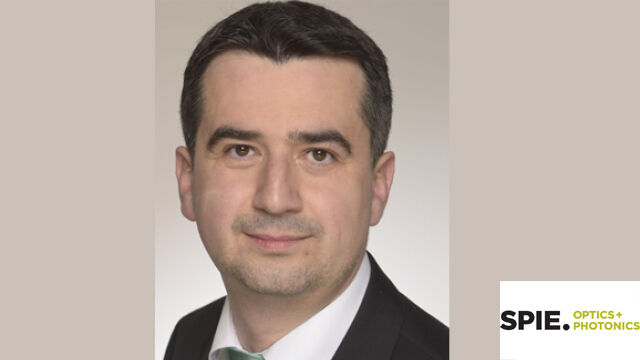Datum: 31.07.2021 – 04.08.2021
Dr. Ðenan Konjhodžić
Ort: virtuell | Optics + Photonics, San Diego/ Kalifornien, USA
Instrument Systems is the first provider worldwide to develop UV-LED calibration standards that can be traceably calibrated to the radiant flux. The UV-LED calibration standards have been developed for the typical peak wavelengths of 280 nm (UVC), 305 nm (UVB) and 365 nm (UVA). The traceability of the radiant flux has been achieved through the very precise calibration of the spectroradiometer and the irradiance probe and an integrative measurement using a goniophotometer.
To minimize the measurement uncertainty of the spectroradiometer, a stray light correction is necessary. This can be created with a tuneable optical source that emits narrow (<1 nm) spectral lines at different wavelengths. For the UV-enhanced spectroradiometer, the light source tunes the output radiation between 210 nm and 850 nm stepwise and the spectroradiometer measures it. Thus, multi-order or internal scattering light can be detected and numerically corrected.
For UV applications, a special diffusing element connected with UV-enhanced optical fibre bundles has been used. The diffusing element ensures homogeneity in detection and the fibre bundle enables flexible handling in combination with high throughput. This probe has been traceable calibrated to the irradiance and used as a detector in the goniophotometer.
Using a goniophotometers the target (UV source) is rotated stepwise in two rectangular angles: θ in [0, π] and φ in [-π/2, +π/2]. The measurement system (spectroradiometer and optics) measures the irradiance at the specific angle and distance E(r0,φ,θ) in [W/m²]. The distance is known and with the measured irradiances at each angle, the numerical integration results in the total radiant flux of the UV source. An additional advantage of the goniophotometric measurement is that angle emission of the UV source can be characterized as well.
With this method the calibration of the UV-LED standards has been realized with very low measurement uncertainties (k = 2) of only 4.5% in UVC, 3.5% in UVB and 2% in UVA. These uncertainties are comparatively low to those in the visible range, which is less problematic for measurements.
Such UV-LED calibration standards can be used for monitoring and the absolute calibration of special UV measurement equipment consisting of the stray-light corrected spectroradiometer and the integrating spheres made of Polytetrafluorethylen (PTFE).

